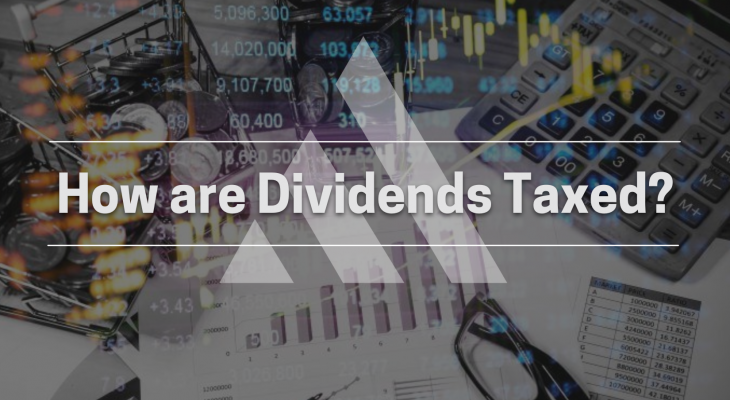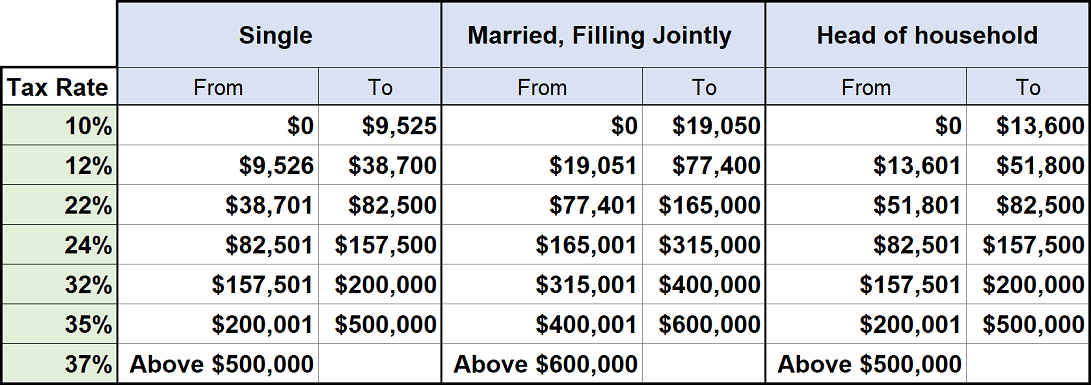How are Dividends Taxed and at What Rates?
By: Jonathan Wolfgram,

Investors know that dividends are distributions of a company’s assets to its shareholders and understand the basic analytical tools to select the best dividend-paying stocks. However, many investors – especially novices and part-time investors – might have to pause before answering the “How are dividends taxed?” question. The first inclination might be that that cash dividends are taxed as any ordinary income. That is only partially true.
Some dividends are not distributed in cash. While not very common, dividend distributions can take the form of in-kind distributions. However, these instances are very rare, except for occasional stock dividends.
However, stock dividends do not generate any immediate tax liability. The Internal Revenue Service (IRS) treats stock dividends as stock splits. Therefore, these dividends fall into the unrealized gains category, which are taxed as capital gains once the shares are sold.
The IRS recognizes two main types of cash dividends in terms of taxation – ordinary dividends and qualified dividends. Because qualified dividends enjoy the benefit of lower tax rates, the Internal Revenue Service (IRS) has complex and specific requirements that will be discussed later.
How Are Dividends Taxed? – Ordinary Dividends
Ordinary dividends have just a few basic requirements under the current IRS regulations,
- In most cases, the amount of ordinary dividends income subject to taxation in any given year will generally appear in box 1a of the 1099-DIV IRS form.
- Certain types of dividends are ineligible for the lower tax rates even if they meet all the qualifying eligibility requirements listed in the next section below. For instance, dividend distributions from master limited partnerships (MLPs), real estate investment trusts (REITs) or tax-exempt companies are always taxed as ordinary income. Furthermore, dividends on employee stock options, special dividends and other one-time dividends always fall into the ordinary dividends category and are taxed as such.
- Money market accounts’ dividend distributions are technically interest payments, which makes them always ordinary dividends. Also, all dividend distributions from sources related to hedging – such as options and short sales – are taxed as ordinary income and are ineligible for the “qualified” status.
Therefore, the partial answer to the “how are dividends taxed?” question is that ordinary dividends are taxed at ordinary income rates. However, to lessen the impact of double-taxation on investor’s dividend distributions, the IRS allows certain categories of dividends that meet specific requirements – qualified dividends – to be taxed at the same tax rates as capital gains, which are generally lower than ordinary income tax rates.
The amount of taxable income from qualified dividends generally appears in box 1b on the 1099-DIV tax form. Since the rules can be complex and there are several exceptions, below is the complete set of IRS requirements for qualified dividends.
How Are Dividends Taxed? – Qualified Dividends
To meet the requirement for taxation at the reduced, capital gain tax rates, all of the criteria listed below must be met.
1. A U.S. corporation or a qualified foreign corporation must be the legal entity distributing the dividends. The Internal Revenue Service (IRS) defines a Qualified Foreign Corporation as any company that meets all three of the following conditions:
a. The corporation is incorporated in a U.S. possession.
b. The corporation is eligible for the benefits of a comprehensive income tax treaty with the United States that the Department of the Treasury determines is satisfactory for this purpose and that includes an exchange of information program. The IRS website contains the full list of eligible treaties in Table 3. List of Income Tax Treaties.
c. The corporation does not meet (a) or (b) above, but the stock for which the dividend is paid is a readily tradable stock on one of the established National Security Exchanges in the United States. These securities markets must be registered under Section 6 of the Securities Exchange Act of 1934 or on the Nasdaq Stock Market.
2. The dividends are not of the type listed by the IRS as “Dividends that are not qualified dividends.” The dividends listed below are not qualified dividends even if they are listed in box 1b of Form 1099-DIV,
a. Capital gain distributions.
b. Dividends paid on deposits with mutual savings banks, cooperative banks, credit unions, U.S. building and loan associations, U.S. savings and loan associations, federal savings and loan associations and similar financial institutions. Dividends from these institutions are interest income.
c. Dividends from a corporation that is a tax-exempt organization or farmer’s cooperative during the corporation’s tax year in which the dividends were paid or during the corporation’s previous tax year.
d. Dividends paid by a corporation on employer securities held on the date of record by an employee stock ownership plan (ESOP) maintained by that corporation.
e. Dividends on which the investor must make related payments for positions in substantially similar or related property.
f. Payments in lieu of dividends, but only if the shareholder knows or has a reason to know the payments are not qualified dividends.
g. Payments shown on Form 1099-DIV, box 1b, from a foreign corporation, which the shareholder knows or has a reason to know that the payments are not qualified dividends.
3. The investor owns the shares for a specific amount of time to satisfy the holding period requirement. Specifically, to meet the holding period condition for qualifying dividends, investors must own common shares for more than 60 days during a 121-day period, which starts 60 days prior to a declared ex-dividend date. The same requirement applies for dividends paid on preferred shares that are due for periods of less than 367 days.
However, dividends on preferred shares that are due for periods totaling more than 366 days have a slightly longer holding period requirement. To achieve eligibility for qualified dividend status for this second category of preferred shares, investors must own the shares for more than 90 days during a 181-day period that starts 90 days ahead of the ex-dividend date. When shares change ownership, the transaction date counts towards the seller’s holding period. The buyer’s holding period begins the day after the transaction.
How Are Dividends Taxed? – Tax Rates
Now that we answered the “how are dividends taxed?” question, the only remaining question is “at what rates?” As ordinary dividends are subject to ordinary income tax rates, the reduced tax rates defined in the Tax Cuts and Jobs Act (TCJA) passed by Congress on December 22, 2017, apply for tax year 2018.

Before the passage of the TCJA in December 2017, capital gains equivalent to the two lowest ordinary income brackets incurred zero tax liability. All income equivalent to the top bracket of ordinary income was subject to a 20% capital gains rate – approximately half of the previous 39.6% ordinary income rate. Finally, all other capital gains between the top and bottom brackets were subject to a 15% tax rate.
However, the TCJA revised income bracket breaks completely. While retaining the same 0%, 15% and 20% rates, capital gains income for the 2018 tax year will be taxed as listed in the table below.

Investors generally seek out equities that fit well with their overall portfolio strategy by analyzing dividend yields, streaks of consecutive annual dividend hikes, share price growth and volatility, the share price’s moving averages and other technical indicators, financial reports, etc. Very few investors will begin their analysis with the “how are dividends taxed?” question.
However, once the selection of potential equities is down to few options with similar characteristics and equitable return potential, investors should consider tax implications. A stock that generates a slightly lower total return than another stock but distributes qualified dividends can generate higher total return over the long term from incremental tax savings compounded over long periods.






 Connect with Jonathan Wolfgram
Connect with Jonathan Wolfgram

